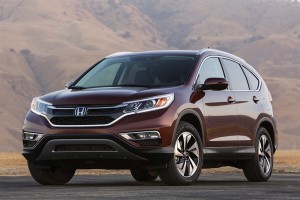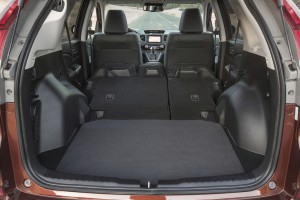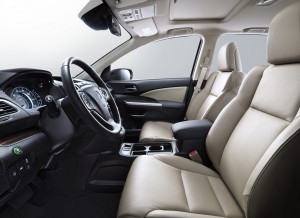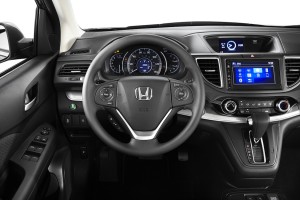Sales of compact crossover vehicles are going like gangbusters while standing a large element of the conventional wisdom about what appeals to American car buyers on its head.
After all, small crossovers, basically a utility vehicle built a passenger-car chassis, have five doors. Until recently, the convention was that Americans didn’t want five doors or they didn’t until recently. Crossovers are also smaller than a conventional sport utility vehicle and run counter to the conviction that American’s don’t like small vehicles.
To some, they also call to mind the hatchbacks from the 1970s – vehicles long ago consigned to dark and forgotten closets in car design studios all over the western world.
Nonetheless, compact crossovers have helped spark the recent boom in new vehicle sales by attracting buyers of all ages and from all walks of life. They are now a critical element in the product line of any mainstream carmaker, such as Honda, which helped lead the shift with the introduction of the CR-V.
But the latest version of CR-V was overhauled once again for 2015 as Honda moved to counter aggressive competition from rival carmakers, looking to elbow into the segment with new vehicles. The changes haven’t diminished the CR-V’s practicality or utility.
For 2015, Honda CR-V received the most significant mid-model cycle revamp in its history, according to Honda, as the Japanese automaker slipped in a new direct-injected VTEC engine and continuously variable transmission and made available a new suite of Honda Sensing safety and driver assistive features on the top trim levels.
The new engine with direct-injection improves efficiency and boosts torque by 11%. In addition, the front and rear fascias have been redesigned and it got new mirrors and wheels, giving the CR-V a more upscale appearance. The cabin was also upgraded, though it still had too much hard plastic at touch points, and the interior was surprisingly noisy given the efforts the competition has made in keeping out all kinds of road clatter
However, changes to the chassis have tightened up the vehicle on curves and in corners and improved the overall ride and handling of the CR-V, which is critical in a segment where rivals such as the Ford Escape and Toyota RAV4 have shown noticeable improvement during recent model cycles.
Honda has always stressed powertrains and the new 2.4-liter, multi-valve four-cylinder engine with double overhead cams and direct injection produces 185 horsepower and 181 lb-ft of torque and shows off the company’s traditional strengths in motor development with its quiet, almost invisible, operation.
(Airbag recalls hammer Honda’s earnings. Click Here for the story.)
The continuously variable transmission used in the CR-V works smoothly and crisply. As far as I could detect during my test run, it didn’t have any of the annoying ticks that have undermined the performance and reputation of the CVTs place over the years. The pickup in the CR-V is relatively smooth and uneventful and the CVT moves through what would be the shift points in an automatic transmission quickly and efficiently.
Honda said it made more than 60 engineering changes to the CR-V to improve stiffness and collision performance, including a strengthened door frames and side frames under the front fenders. The safety equipment vehicle stability assist, electronic stability control system, anti-lock brakes, frontal airbags and side-curtain airbags. There is also new front seat design that can help reduce the severity of neck injury in the event of a rear collision.
Honda also made an effort to offer more and better standard equipment on the CR-V, such as a new configurable center console, sliding sun visors and rear console ventilation ducts, a power tailgate, a 10-way power and heated driver’s seat with memory, LED daytime running lights and a 7-inch display audio and telematic touch screen.
(Click Here for a close-up of the new Honda Pilot.)
Rearview cameras, which I have found to be enormously helpful, are standard equipment on all 2015 Honda vehicles, including the CR-V.
Starting with a manufacturer’s suggested retail price of $23,320, the 2015 CR-V has EPA fuel economy ratings of 27 miles per gallon in the city and 34 mpg on the highway and 29 mpgcombined for front-wheel-drive models. The mileage rating is 26 city, 33 highway and 28 combined for the all-wheel-drive models.
The new top-of-the-line “Touring” model comes with Honda’s first application of two advanced driver-assistance technologies: collision mitigation braking system and a lane keeping assist system. It can also be equipped with Adaptive Cruise Control for the first time for the CR-V. The new systems, plus forward collision warning and Honda Lane Watch are part of the new “Honda Sensing” suite of safety technologies that can help improve a driver’s situational awareness.
(To see more about Google acknowledging 11 crashes with autonomous cars, Click Here.)
Over the years, the Honda CR-V captured the attention of a host of buyers and converted many of them into fans and loyalists. The latest version should help Honda hold on to the loyalists. But given the competition, Honda might have a harder time conquesting new customers even thought the new engine is big plus and the improvements have made a very good vehicle even better.






A noisy car is not a pleasure to drive and Honda
CRV and not improved this defect in years.
I lost count of the number of grammatical mistakes in this article. Who is proofreading for you?
Well, in this particular case, I am. I’ve gone through it again and cleaned it up. I’d like to tell you that I am without fail as a copy editor, but clearly that’s not the case and sometimes I have an off moment. Thanks for the feedback and keeping us (me) honest! I appreciate it.